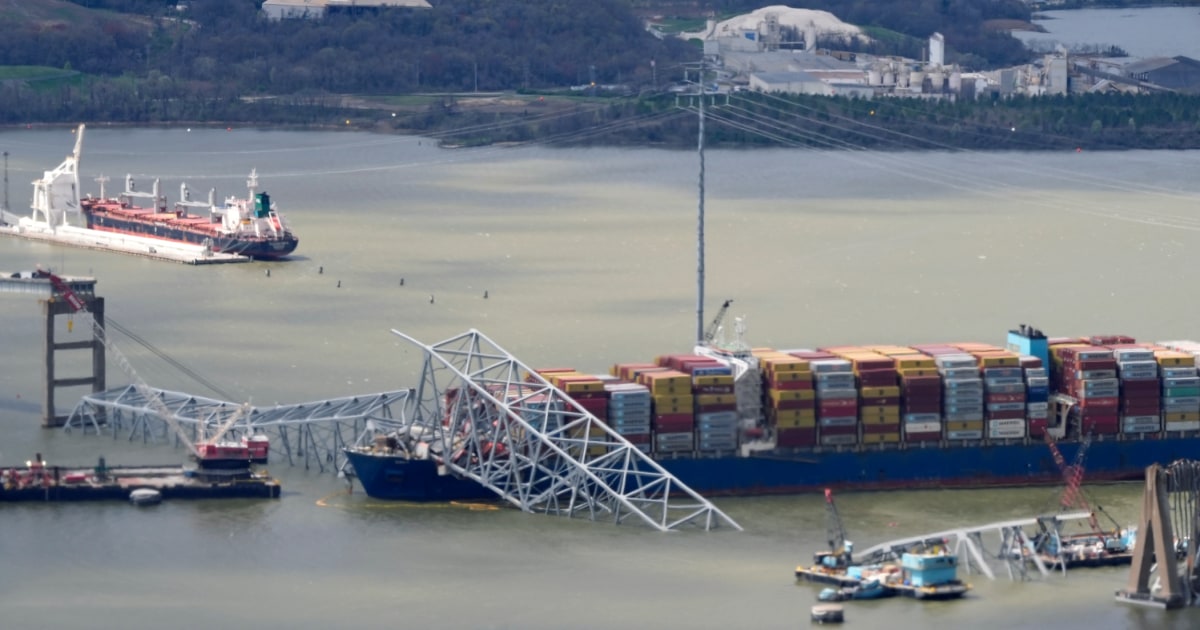Containers being moved from ship to access the fallen Baltimore bridge’s roadway

Recovery efforts at the site of the Francis Scott Key Bridge collapse reached a “critical step” Sunday as crews began removing shipping containers from the vessel Dali.
Removal will allow them to access a key portion of the roadway, now perched above the containers on board the 980-foot, Singapore-flagged ship when it lost power and struck the bridge March 26.
“Removing containers allows for safe access to then remove the pieces of the Key Bridge that lie across the ship’s bow, taking weight off the ship and ultimately allowing for the movement of the ship,” Key Bridge Response 2024 Unified Command said in a statement Sunday.
Unified Command is a cooperative of first responders, recovery crews, and agencies planning to redevelop the bridge and reopen the waterway. They include the U.S. Coast Guard, the U.S. Army Corps of Engineers, and various state agencies, such as Maryland State Police.
The bodies of three of six roadway workers who were on the bridge when it collapsed have been recovered, and the other three are presumed dead.
Moving the ship is important, as it would allow authorities to reopen the port to at least some traffic, officials said.
“The removal of these containers is a critical step required to safely move the [Merchant Vessel] Dali and eventually fully re-open the Fort McHenry Channel,” Key Bridge Response 2024 Unified Command said in a statement Sunday.
Removal was being done with a floating crane, Unified Command said. Images it released Sunday also showed a section of bridge support that was being removed.
Officials are under pressure to rebuild the bridge, which carried an average of 34,000 vehicles a day. On Thursday, Maryland Gov. Wes Moore said on the social media platform X, “We cannot rebuild the bridge until we clear the wreckage.”
Another key goal is restoring traffic to the Port of Baltimore, essentially shuttered since the collision, with 32 vessels getting through since then via temporary, alternate channels, Unified Command said.
The port, the top destination for imported cars shipped to the United States, accommodated roughly 500 container arrivals a year in recent years, according to trade tracker Kpler.
The Corps of Engineers said last week that it hopes to open a one-way shipping lane in the port by the end of April via a channel 280 feet wide and 35 feet deep. It also announced a larger goal: restoring full port traffic by the end of May via what it described as a “700-foot-wide by 50-foot-deep federal navigation channel.”
The bridge’s collapse has blocked the Fort McHenry Channel and thus throttled nearly all traffic in and out of the port, though officials have found ways to move temporary traffic through the waterway.
